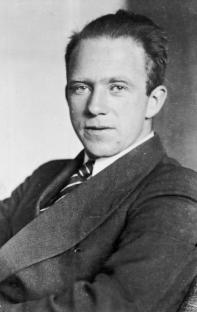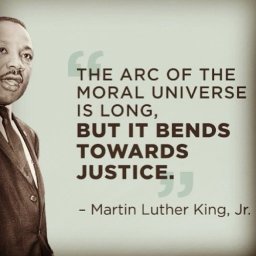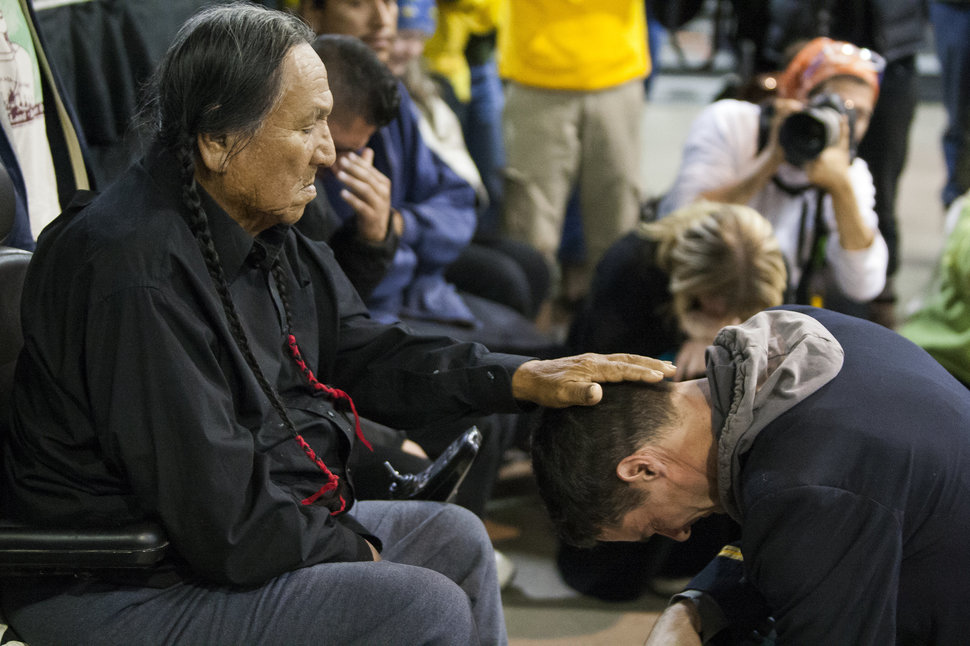Texts: Isaiah 35:1-10 + Psalm 146:5-10 + James 5:7-10 + Matthew 11:2-11
I took a class in college called something like “Conceptual Physics,” but which we all called “Physics for Poets.” It was a physics class without any math, mostly taken by English and other humanities majors in order to fulfill a distribution requirement in the sciences. We studied things like Newton’s law of universal gravitation and Einstein’s theory of special relativity using stick figures named Moe and Joe sketched out on the chalkboard by our professor, Dr. Kim.
I don’t really fancy myself a poet, though I try my hand occasionally, but the link between the science of the observable world and the theologies that connect my experience of the world to my knowledge of myself remains. Physics sometimes, unexpectedly, helps me understand religious concepts. For instance, hope.

The German physicist Werner Heisenberg, a pioneer of quantum physics, published a paper in 1927 that described the unavoidable imprecision that enters when trying to plot both the position and momentum of an object. He was thinking of unimaginably small objects, like electrons or photons I suppose, not soccer balls. His idea, which we now call Heisenberg’s Uncertainty Principle, says that the more closely you try to pin down where a thing is, the less accurately you can say how quickly it is moving, and (I think) what direction it is moving in. Conversely, the more accurately you describe the velocity of a thing, the less accurately you can describe just exactly where the thing itself is.
Now, remember, Heisenberg was writing about quantum physics, laws of nature operating at an unseen level. Fortunately for us, for most of our waking days, we do a pretty good job of determining where, how fast, and in what direction objects around us are moving (which is why we are able to play soccer). But when we begin asking questions about the inconceivably small, invisible and practically undetectable world around us, operating at the microscopic level, different rules apply.
So, and here’s another piece of physics for us to mull over, the harder you try to observe things at this level of existence, the more likely you are to actually alter what you are looking at. This is called the “observer effect,” and if you’ve ever used a tire gauge to check the pressure in your tires, you already know what I’m talking about. You know how this works, you unscrew the tiny cap to the inner tube of your tire and, as you apply the gauge to the tire, you hear the hiss of air being released. You wanted to know the pressure in your tire, but the very act of measuring the pressure has changed the pressure itself. In quantum mechanics the same thing happens. In order to observe objects at the sub-atomic level, like an electron, we have to direct photons at it, which actually changes the path of the thing we’re trying to observe. There is no neutral observer at this level of science – to watch is to participate.
A long time ago I picked up a habit from a dear friend of mine who has spent most of her life practicing the art of counseling and, in particular, counseling people around issues of oppression and its impact on their lives. She very intentionally greets people by asking, “what’s new and good?” I’m sure you’ve heard me repeat the greeting plenty of times myself.
This isn’t arbitrary on my part. It’s not just another way of saying, “what’s up?” Although I’m interested in knowing what’s persistently old and difficult, I often choose to begin small groups by asking “what’s new and good?” because I believe that choosing to focus, training yourself to observe, what is new and good in the world is a spiritual practice. Although each of us has a multitude of stories we could choose to tell about our lives, when we practice looking for the new and the good, we are choosing to find evidence that the past doesn’t define the future – that old hurts do not cut off the possibility of future healing, and that signs of that new life are already appearing.
As with any spiritual practice, choosing to look for what is new and good in the world is not easy and does not come naturally for most of us. Like the painful throbbing of a stubbed toe, old injuries stick with us and demand our attention. Chronic pain, ongoing illnesses and the injustice of oppressive systems that surround us make it difficult to concentrate on what is emerging and new, what is healing and hopeful.
The season of Advent is much longer and much harder than we often care to admit. We say that it is the four weeks before Christmas, but in another sense, it is our whole lives. We spend our whole lives waiting for the vision of the prophet Isaiah to come true,
“The wilderness and the dry land shall be glad, the desert shall rejoice and blossom…
the burning sand shall become a pool, and the thirsty ground springs of water…
and the ransomed of the Lord shall return, and come to Zion with singing”
The wildernesses in which we wander feel so arid, and maybe especially so during this season when the desire to create the perfect Christmas for our families and children is at odds with the struggles we face at work, at home, or as a nation. Our country feels more divided than at any moment in recent memory. Isaiah’s promises feel far off, so far off that we doubt we will ever see them in our own life.
 Martin Luther King, Jr. famously said, “the arc of the moral universe is long, but it bends toward justice.” Justice, these days, can feel hard to find. It can seem tiny in the face of personal tragedies and ongoing wars, almost microscopic. We would like to know precisely where God’s justice is, and when it will arrive. But theological physics seems to indicate that we cannot know precisely where God’s justice is and how quickly it is moving – only that it is on the way, and that our own search for the signs of God’s justice, in fact, changes the world we are trying to observe.
Martin Luther King, Jr. famously said, “the arc of the moral universe is long, but it bends toward justice.” Justice, these days, can feel hard to find. It can seem tiny in the face of personal tragedies and ongoing wars, almost microscopic. We would like to know precisely where God’s justice is, and when it will arrive. But theological physics seems to indicate that we cannot know precisely where God’s justice is and how quickly it is moving – only that it is on the way, and that our own search for the signs of God’s justice, in fact, changes the world we are trying to observe.
So, in this moment when racist organizations we once imagined to be on the fringes of society are gaining confidence and organizing themselves into a global movement, I am choosing to celebrate the news that the Army Corps of Engineers sided with the water protectors at Standing Rock. I am finding hope in images of military veterans kneeling before elders of the Lakota Sioux tribe, offering an apology for centuries of violent oppression and exploitation of Native peoples. As we listen to newly emboldened anti-immigrant rhetoric moving from the margin to the middle of American discourse, I am encouraged by the actions of states like California and sanctuary cities like Chicago that are putting mechanisms in place to resist mass deportations should the federal government move against our neighbors under the cover of paranoid fantasies and slanderous lies.

I am looking for what is new and good in the world. I am perfecting my perceptions. I am practicing hope, and I am waiting with patience for the fulfillment of God’s promises – knowing that as I look for evidence of God’s work in the world, I am drawn into that very work.
What are you looking at this Advent season? What are you looking for? How are you training yourself to seek and to find evidence of God’s movement in the world? I know it’s hard. I know that! The temptation to constantly rehash all that is old and wrong and broken is ever-present. But I also know that there are no neutral observers. To watch is to participate. It matters which stories we tell. It matters, the conversations we have. Do you say it’s all falling apart, or do you say the moment for radical transformation is finally upon us? It matters!
Stay awake, therefore, and watch for the coming of the Lord.
Very moving message.